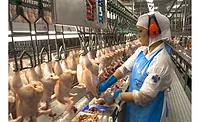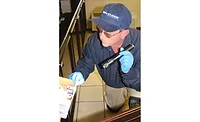Exclusive interview: Q&A with Fortress Technology on inspection practices

Food Safety Strategies was recently able to talk to Steve Gidman, president, Fortress Technology, about best inspection practices and inspection protections.
Liz Parker: How often should bakery/snack manufacturers regularly review their own food safety strategies, to reflect reforms, and what sort of inspection protections do they need to apply?
Steve Gidman: In recent years, retailers have become more risk-averse when it comes to food safety and quality, imposing their own—increasingly stringent—protocols and standards on suppliers. Bakery and snack manufacturers can feel overwhelmed by the sheer extent of choices, food safety initiatives and third-party audits that they must contend with. Companies need to ensure that the required form of inspection and necessary specifications are in place. A retailer ‘safety net’ will also often include assurances about regular system checks to ensure that all QA systems—including metal detection—are functioning correctly. Some retailers may put pressure on suppliers, or potential suppliers, to invest in x-ray contaminant detection. Being able to demonstrate the reliability and improved sensitivity of installed metal detectors (with FM software, for example) may be one way to resist this sort of pressure.
LP: What are some inspection strategies for staying ahead of the curve?
SG: Over the last 12 to 18 months we have seen greater demand for faster, more versatile inspection systems as manufacturers, particularly within the snacks industry, are facing greater pressure from retailers to provide products in different bag styles and sizes. As a result there has been heightened interest in multi-lane metal detector systems. Integration of equipment is also increasingly common place within snack production environments. For instance, with baggers and checkweighers it is possible to have a single screen set up, linking all machinery together resulting in a smaller footprint, and the simplification of gathering data. Automatic testing will also continue to be a big development within the industry and help manufacturers stay ahead of the curve.
LP: What are some potential product risks?
SG: Metal remains the biggest and most likely contaminant risk within food processing and packing plants today due to the number of possible metal contaminants introduced within the food supply chain. Through the rising use of automation to improve efficiencies, the need for sufficient checks and preventative maintenance practices becomes mandatory. Previously, a team of manual operators would visually inspect wear of machine parts and wire mesh from sieves for example, yet with fewer manual workers on a line, the risk of metal contaminants increases. Installing a metal detection system is the first line of defense. However, it is equally important to use metal detection in conjunction with a quality assurance program, ensuring proper procedures are in place for controlling rejects, and as a fool-proof process to determine the source of any contaminants picked up. Equipped with this information, appropriate actions can be taken to protect against costly product recalls and damage to brand reputation.
Looking for quick answers on food safety topics?
Try Ask FSM, our new smart AI search tool.
Ask FSM →









